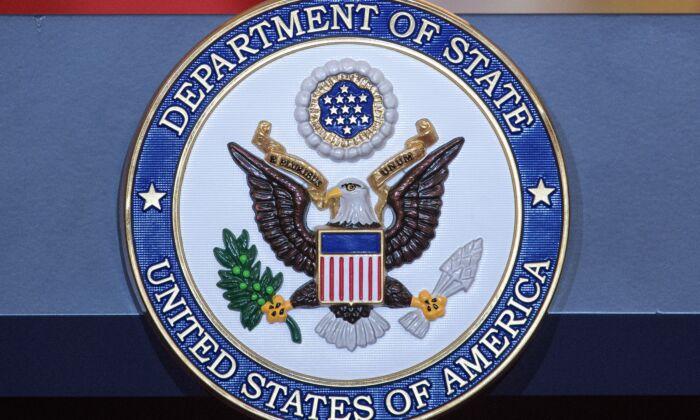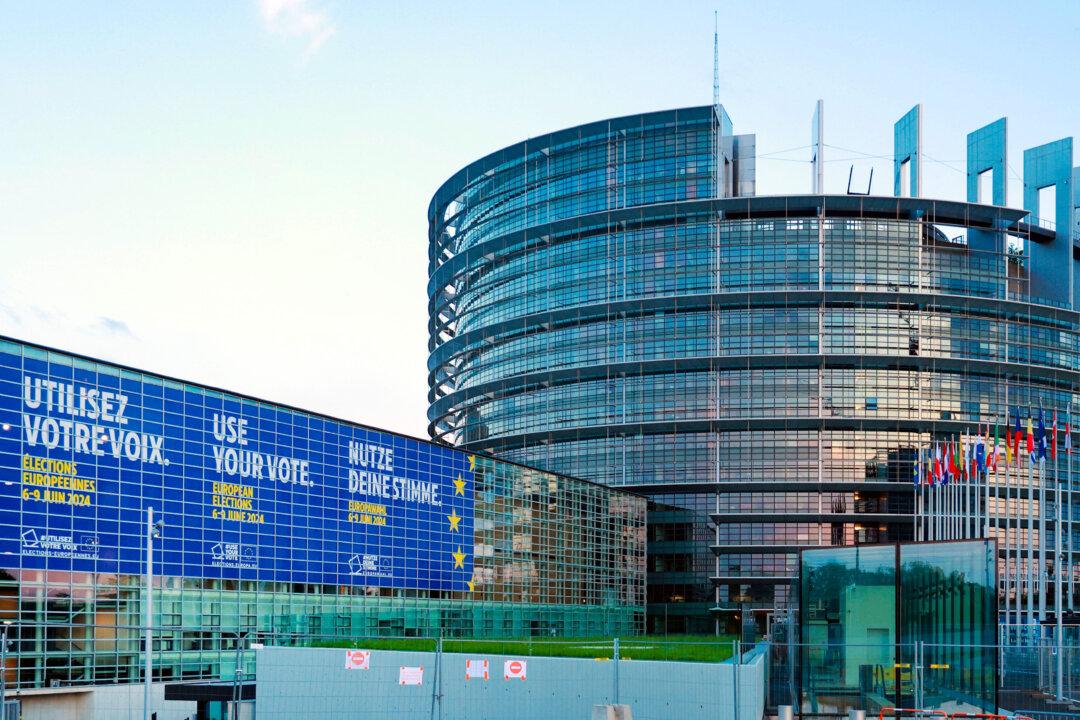The Inflation Reduction Act recently passed by Congress is a totalitarian piece of legislation that brings America further down the road to totalitarian socialism, said free-market economist Thomas DiLorenzo.
The bill provisions tax hikes and “hundreds of additional regulations, especially on energy,” so the combination of increased demand in the economy and decreased supply will cause prices to go up, not down, he explained.
“It has nothing to do with fighting inflation. … It’s basically the Green New Deal in disguise, sort of a Trojan horse.”
DiLorenzo cited comments of the former chief of staff for Rep. Alexandria Ocasio-Cortez (D-N.Y.) about the Green New Deal.
DiLorenzo called the Inflation Reduction bill “an attempt to essentially destroy American capitalism, and adopt some form of socialism and central planning.”
Why Central Planning Does Not Work
Everywhere in the world where central planning was tried, it caused a disaster, said DiLorenzo, author of the upcoming book, “The Politically Incorrect Guide to Economics.”“It doesn’t work because for an economy to work; it requires a lot of knowledge in the minds of millions of people, all the market participants, the buyers, the sellers, the entrepreneurs.”
People participating in economic activities possess very specialized knowledge of the jobs they do and make money doing their jobs, DiLorenzo explained, and then they spend the money to buy goods or services that other people specialize in.

“No group of government planners could possibly imitate or possess the knowledge required to do the simplest thing like make a pizza.”
To make a pizza from scratch, planners have to start with wheat and tomato farming and have extensive knowledge not only about farming but also about the entire supply chain for pizza.
In the free market economy, decisions on how to produce things are guided by prices that are determined by supply and demand, and by buyers and sellers, DiLorenzo said.
“You can only have that in a private property society. You don’t have that under socialism, where the government claims to own property and just randomly and arbitrarily sets prices. That creates chaos.”
The latest example of central planning failure is Venezuela, which went down the socialist path, leading one of the most prosperous countries in South America to economic collapse, DiLorenzo said.
How Price Controls Snowball
The Inflation Reduction Act will impose higher taxes on corporations and small businesses, DiLorenzo said, which in turn will decrease production. When production declines, fewer jobs are created, leading to rising unemployment which in turn increases government spending on unemployment benefits and welfare, he explained.Also, the energy regulations imposed by the bill on businesses incur costs, DiLorenzo said, so businesses need to spend their resources on implementing the regulations at the expense of producing goods and services.
“That all will cause the effect of reduced supply in the economy, and that will put even further upward pressure on prices.”

When prices go high, the government may implement price controls, DiLorenzo explained, and then people will demand the government lower prices even more, which will make production less profitable. As a result, the supply will shrink, he added.
On the contrary, lower prices set by the government will raise the demand for controlled goods because people will want more of them, DiLorenzo pointed out.
“So you increase the amount of people want, [and] at the same time you reduce the supply available, [so] you have shortages. Black markets will become more prevalent.”
“It’s usually the poorest of the poor who are harmed the worst, whenever there’s a situation like that.”
The government may take action then to remedy shortages of price-controlled goods by putting price controls on the input ingredients to the product, hoping to reduce the cost of manufacturing and getting more of the product in the market, DiLorenzo continued.
This policy, however, will cause shortages of the ingredients, and it will snowball, the expert explained. “It might start out just with the price of milk and the price of bread, but it inevitably will snowball into a lot more than that.”
Provisions of Inflation Reduction Act

- Energy and climate change. Allocates spending of a total of $369 billion which includes incentives for manufacturers of solar panels, wind turbines, and electric vehicles and for consumers and businesses to increase their use of electric appliances and vehicles. Among the incentives are tax credits, grants, and loans. The bill also provides measures to reduce the environmental impact of agriculture and increase the costs of oil and gas drilling.
- Extension of government-run health care programs. Extends for three years the temporary expansion of Affordable Care Act subsidies due to COVID-19.
- Medicare drug prices. Regulates drug prices in Medicare through three-step price negotiation. The secretary of the department of health and human services proposes drug prices to manufacturers, which can submit their counteroffers. However, the secretary makes the final decision on drug prices and, in certain cases, has a right to penalize companies that disagree with the final prices set by the secretary.
- New corporate minimum tax. Imposes 15 percent minimum tax on businesses and changes the rules to deduct costs of machinery and equipment purchased by companies to grow their business. This may hinder investments, reduce job creation, and diminish production, thus contributing to price increases.
- Funding an “army” of nearly 87,000 new IRS agents. The funding for the Internal Revenue Service in the amount of $78.9 appropriated by the bill will exceed several times the current agency’s annual budget. The IRS will be tasked with finding money to reduce the federal budget deficit.
Green New Deal

The climate change agenda was always meant to destroy capitalism and adopt socialism, DiLorenzo explained.
In the 1970s and into the 1980s, there were warnings about a new ice age due to air pollution blocking the sun. A huge amount of money was spent over decades to reduce pollution without imposing socialism, and, consequently, more sunlight gets in, DiLorenzo said.
Later in the 1980s, socialism was deemed a solution to fight global warming, but the initiative did not totally destroy American capitalism, he continued.
Then an issue of climate change emerged, and people were told that socialism is needed to prevent climate change consequences, he pointed out. The policies to address climate change has been named “Green New Deal.”
DiLorenzo called the Inflation Reduction Act “probably the most totalitarian piece of legislation” that he can recall reading during his 40-year career as an academic. But it is not enough for socialists, he said.
“Either we stop this now, or we don’t. And if we don’t, they will take it as a great victory and go even further ... and have an even greener New Deal.”
“One thing that Americans have to wake up to is who these people are. They’re not Democrats; they’re not liberals and not progressives. They used to call themselves economic Democrats, anything but what they are. They are totalitarian socialists.”
How to Reverse Socialist Policies
DiLorenzo is not optimistic as to whether this totalitarian trend can be reversed, even if the Republicans manage to take over Congress in the 2022 midterm elections.“[The Republicans] tend to sit on their hands a lot and not get much done.”
In his view, the country needs decentralization, which means taking power away from the center in Washington, D.C. One form of decentralization is the current massive migration of people away from places like California and New York, which are controlled by the bigger socialist governments, and toward more freedom-oriented states such as Florida, Texas, and the Carolinas, DiLorenzo said.
“It’s sort of a soft secession,” he said. “[People ] are voting with their feet, and we need a lot more of that.”






